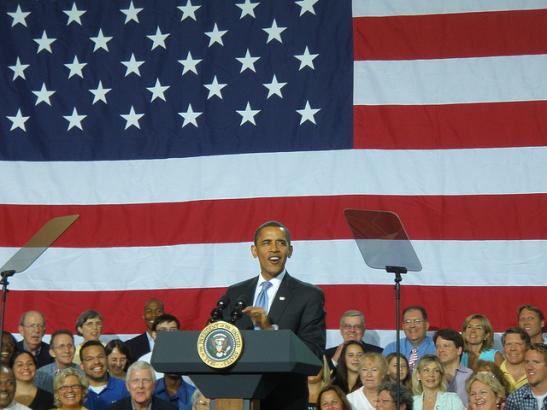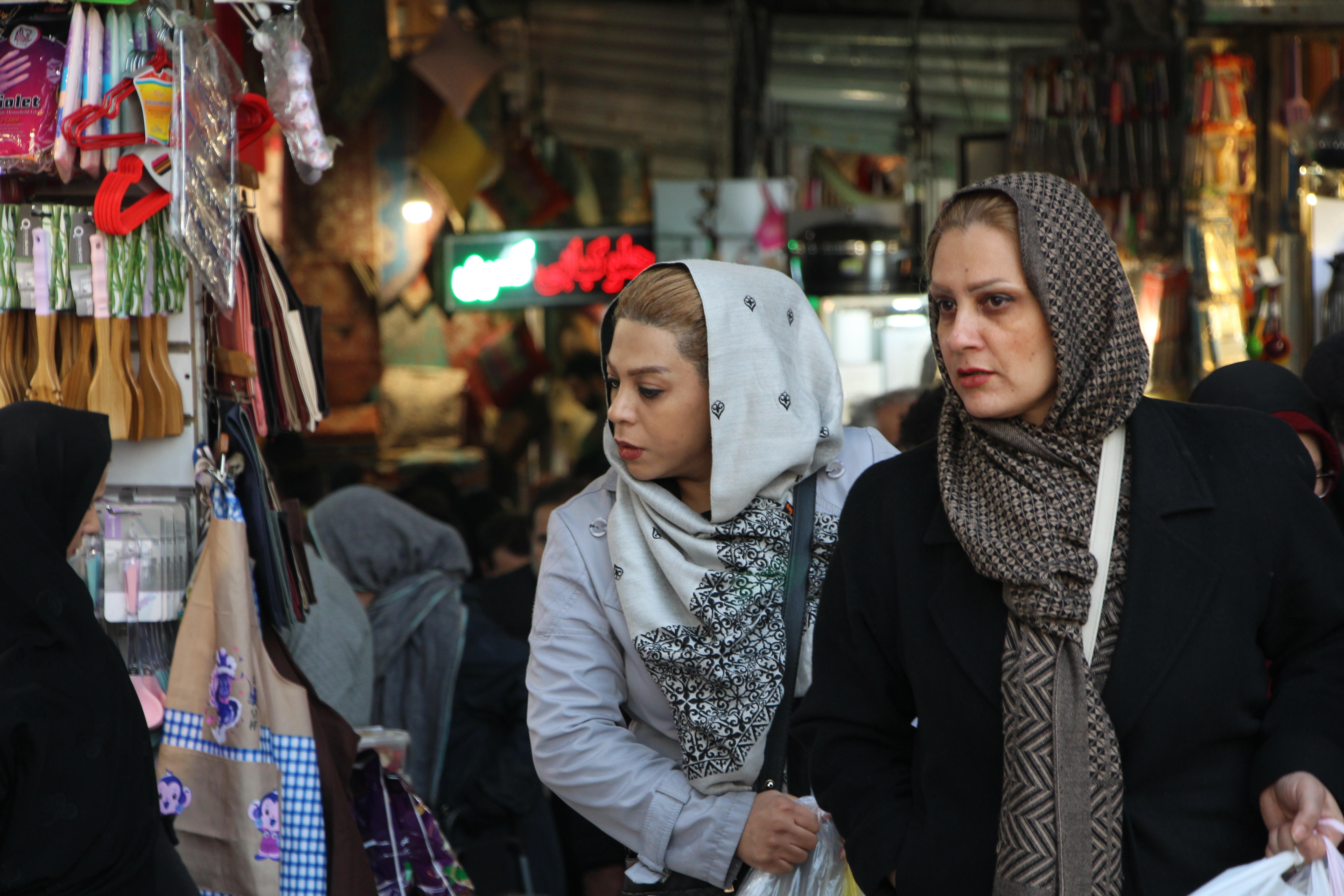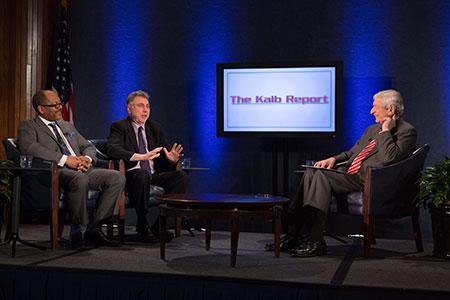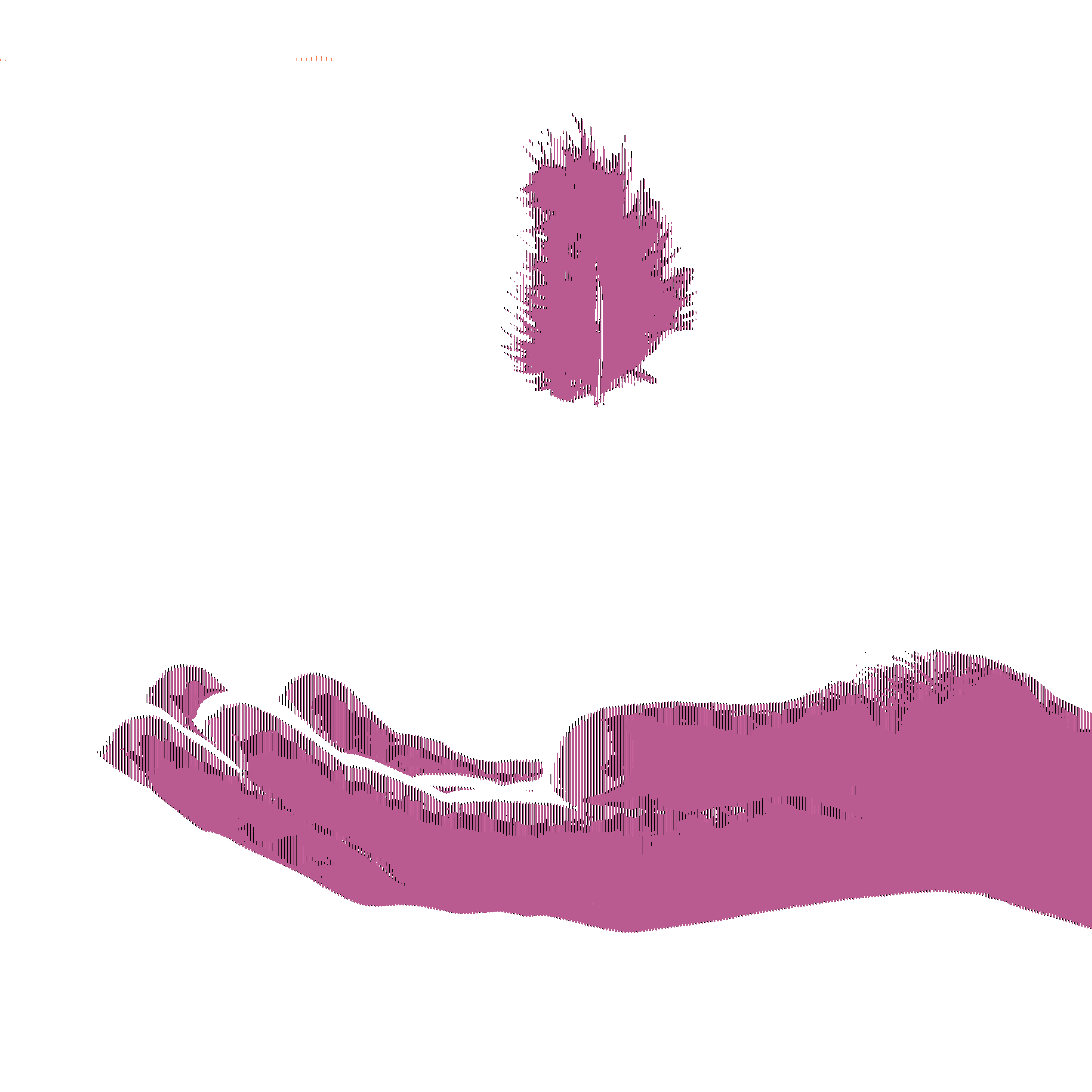
SELLING THE IRAN DEAL
In a commencement address at American University half a century ago, President John F. Kennedy outlined his bold strategy for a nuclear test ban treaty with the Soviet Union. Last week, President Obama chose the same venue to make his case for the historical nuclear agreement with Iran. Veteran broadcaster and Pulitzer Center Senior Adviser Marvin Kalb, who covered the Kennedy speech, reflected on the significant parallels in this interview on public radio's Kojo Nnamdi Show.
Both leaders, said Marvin, argue for diplomacy: "You can look at an enemy and say that this is somebody we're going to have to defeat, we are going to have to destroy. Or you can think about the enemy as human beings, like you, seeking things similar to you—not exactly the same by any means—and let's try to persuade them that if they go ahead—in this case Iran—and build a nuclear weapon, it's wrong for them and it's wrong for the rest of the world."
Meanwhile, Pulitzer Center grantee Reese Erlich has been in Tehran examining the nuclear deal from Iran's perspective. In this piece for USA Today and GlobalPost, Reese spoke with an unusual constituency: members of Iran's thriving Jewish community, which numbers between 12,000 and 30,000, making it the second largest in the region after Israel.
According to Reese, "most Iranian Jews strongly disagree with Israeli Prime Minister Benjamin Netanyahu's denunciations of the accord." Instead, they see it as an opportunity to reduce tension in the Middle East. "There was the possibility of war," one Jewish leader told Reese. "With the deal signed, it will take war off the table and bring stability to the region."
THE CRISIS GROWS, SO DOES INDIFFERENCE
Two years ago, Pulitzer Center grantees Hugh Eakin and Alisa Roth undertook a comprehensive investigation of the Syrian refugee crisis: "It seemed to us that it couldn't get much worse. There were nearly three million officially registered refugees, and nearly one-third of Syria's entire population of 22.5 million—a staggering number—had been uprooted from their homes."
It has gotten worse. Much worse. As Hugh and Alisa write in a new dispatch for the New York Review of Books, "The numbers keep going up: there were 700,000 new Syrian refugees in the first four months of 2015 alone—a rate that exceeds that of any other period in the war—pushing the total number of Syrians registered with the UN to more than four million. As of the summer of 2015, nearly half the entire population of Syria is displaced; and in Syria and Iraq together, there are now some 14 million people in need of humanitarian assistance."
The international community has responded to this crisis with astonishing indifference. "So ineffective has the international response become that in March 2015, a group of twenty-one leading NGOs formally accused the UN Security Council of 'failing to implement' its own resolutions on Syria, abetting what they called the 'worst year' of the Syrian crisis to date." For its part, the U.S. has accepted fewer than a thousand refugees.
Hugh and Alisa's work will appear in Flight from Syria: Refugee Stories, an e-book produced by the Pulitzer Center that will feature the writing and photography of nine Pulitzer Center grantees—all journalists who have reported on Syrian refugees between 2013 and 2015.
NOT EVEN THE AIR THEY BREATHE IS FREE
In the second installment of Pulitzer Center grantee Matt Black's "Geography of Poverty" project, Matt and MSNBC's Trymaine Lee explore a deadly variant of racial redlining in Louisiana's Cancer Alley, an 85-mile stretch of refineries and factories between New Orleans and Baton Rouge.
"Studies conducted in Louisiana and throughout the country show that the poor and, in particular, poor African Americans, are more likely to live near industrial plants and are exposed to toxic pollutants at a rate much higher than more affluent whites," writes Trymaine. Matt's black and white photographs are gritty and hauntingly elegiac.
A NEW TOOL FOR TEACHING
The Pulitzer Center supports journalists by giving them travel grants and helping them place their work in mainstream media outlets, but as our Education Director Mark Schulte frequently points out, education is also at the core of our mission: we provide compelling educational resources for teachers and students as well as a space for dialogue on the global issues that affect us all.
This fall we are particularly excited about our Lesson Builder, a new tool we've designed especially for teachers. Use the search bar to find and collect Pulitzer Center journalism resources of any media type on a given topic, country or region, then write a lesson summary and some questions for your students to answer and share it all easily with a customized URL link. The builder offers model lesson plans, such as this one that incorporates Andrew Lawler and Heather Pringle's reporting on isolated people of the Amazon, including Andrew's Sunday story in the New York Times.
Until next week,
Tom Hundley
Senior Editor

President Trump's attempts to undermine the nuclear accord have united Iranians against the U.S. A...









